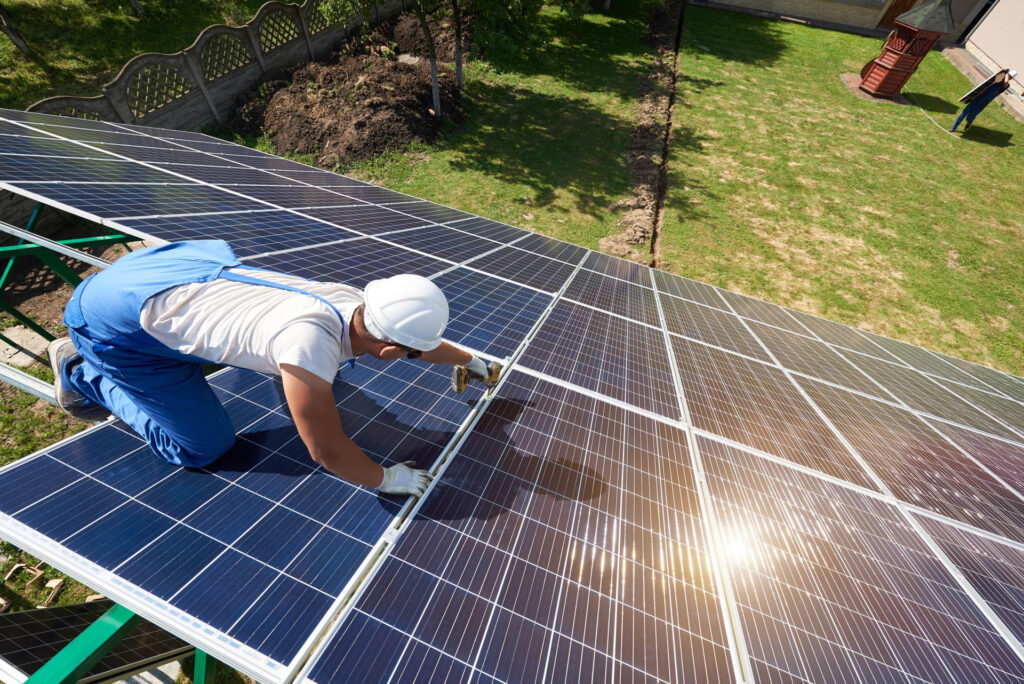Sustainable living made easy. As the world progresses towards a sustainable future, homeowners increasingly seek innovative solutions to reduce their carbon footprint and lower energy costs. Among these solutions, the installation of battery storage systems in residential properties is gaining significant traction. In this blog post, we’ll delve into the benefits, considerations, and steps involved in integrating battery storage systems into your home, empowering you to embrace sustainable living effortlessly.
Understanding Battery Storage Systems:
Before diving into the installation process, it’s crucial to comprehend the essence and functionality of battery storage systems. These systems store surplus energy generated from renewable sources, such as solar panels, for later use. Comprising rechargeable batteries, inverters, and monitoring systems, they enable homeowners to efficiently store, manage, and optimize their energy usage.

Benefits of Residential Battery Storage Systems:
The installation of battery storage systems offers numerous benefits for homeowners:
- Enhanced Energy Independence: By storing excess renewable energy, homeowners reduce dependence on the grid, fostering greater energy independence.
- Cost-Efficiency: Battery storage systems enable homeowners to store energy during off-peak hours when electricity rates are lower, resulting in substantial cost savings over time.
- Grid Resilience: During power outages or emergencies, these systems provide backup power, ensuring continuous operation of essential appliances and devices.
- Environmental Impact: Maximizing the utilization of renewable energy and diminishing reliance on fossil fuels, battery storage systems contribute to reducing greenhouse gas emissions and combating climate change.
Considerations Before Installation:
Before installing a battery storage system in your home, consider the following factors:
- Assessing Energy Consumption: Evaluate your household’s energy consumption patterns to determine the suitable size and capacity of the battery storage system required.
- Solar Panel Compatibility: Ensure compatibility with existing solar panels, facilitating effective integration with your solar PV system.
- Financial Implications: While offering long-term savings, consider upfront installation costs, along with potential incentives or rebates available.
- Maintenance Requirements: Understand the system’s maintenance needs, including regular inspections, battery replacements, and software updates.

Steps to Install Battery Storage Systems:
- Site Assessment: Collaborate with a qualified installer to assess your property’s suitability for installation, accounting for available space, electrical capacity, and regulatory compliance.
- System Design: Work with the installer to design a tailored battery storage system aligned with your energy needs and existing infrastructure, ensuring seamless integration.
- Permitting and Approvals: Obtain necessary permits and approvals from local authorities to comply with building codes and regulations.
- Installation: Proceed with the installation, encompassing battery mounting, inverter connection, and system configuration, conducted by experienced professionals.
- Testing and Commissioning: Ensure proper functionality and performance through thorough testing and commissioning of the installed system.
- Monitoring and Maintenance: Regularly monitor system performance and schedule routine maintenance to maximize efficiency and longevity.
Sustainable living made easy by Installing a battery storage system in your home is a significant step towards embracing sustainable living and reducing your environmental footprint. By harnessing the power of renewable energy and maximizing energy efficiency, homeowners can enjoy greater energy independence, cost savings, and peace of mind knowing they are contributing to a cleaner, greener future for generations to come. View Projects
